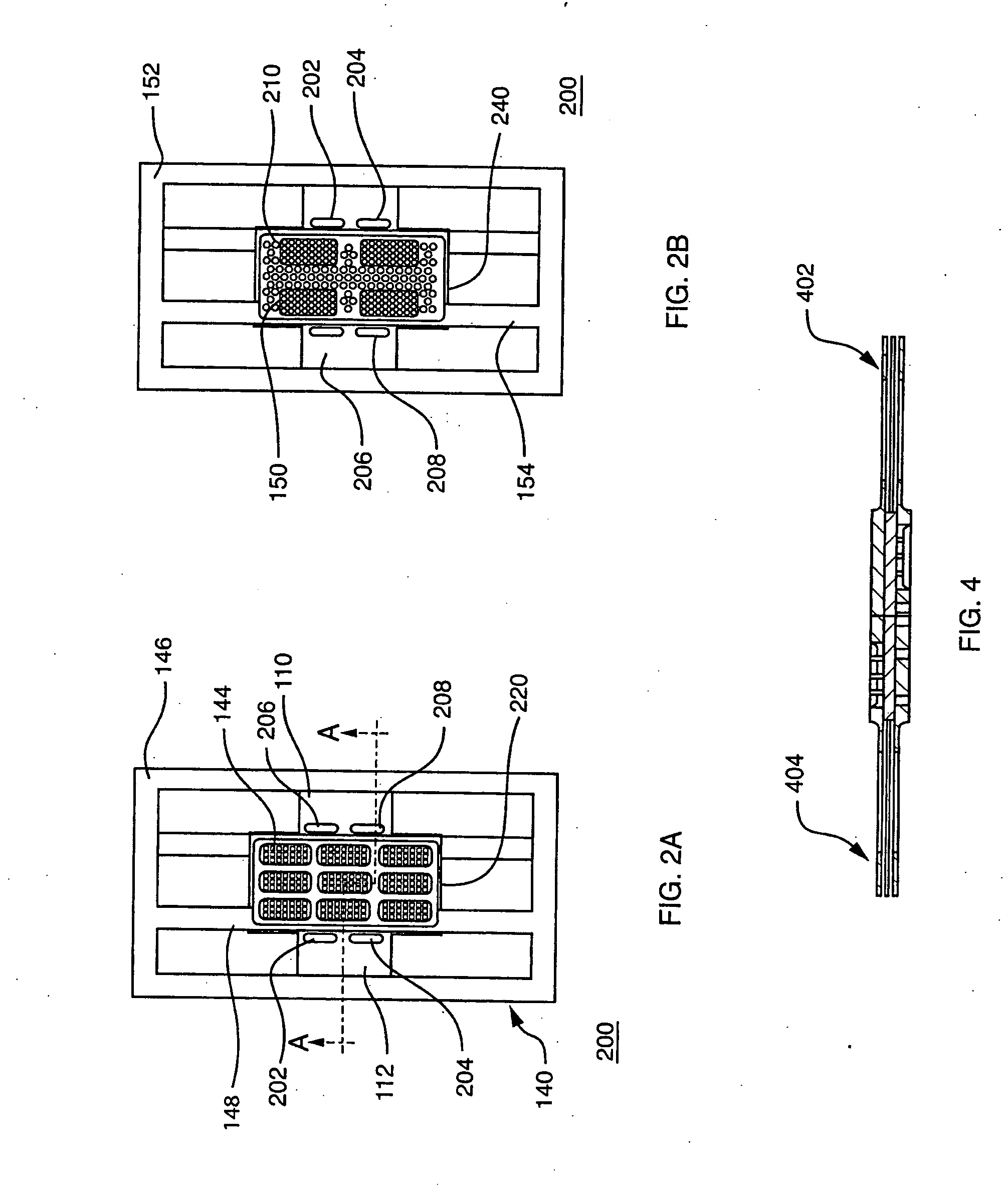Method of manufacturing a fuel cell array and a related array
a fuel cell array and manufacturing method technology, applied in the field of fuel cells, can solve the problems of limited cathodic generation of water, limited overall reaction, and limited use of reformer based systems, and achieve the effect of reducing the need for gaskets and facilitating the molding process
- Summary
- Abstract
- Description
- Claims
- Application Information
AI Technical Summary
Benefits of technology
Problems solved by technology
Method used
Image
Examples
Embodiment Construction
[0034]FIG. 1 is an exploded perspective view of a lead frame assembly and other components of the fuel cell fabricated in accordance with one aspect of the invention. More specifically, the lead frame assembly 100 includes a membrane electrode assembly (MEA) 102. The MEA 102 typically includes a catalyzed membrane electrolyte 104, which may include a protonically conductive, electronically non-conductive membrane. One material that may be used for the catalyzed membrane, which is commercially available is NAFION® a registered trademark of E.I. Dupont de Nemours and Company, a cation exchange membrane based on a polyperflourosulfonic acid in a variety of thicknesses and equivalent weights. The membrane is typically coated on each of its major surfaces with an electrocatalyst such as platinum or a platinum / ruthenium mixture or alloyed particles (not shown). Thus, it is referred to herein as the “catalyzed membrane electrolyte, or the “catalyst coated membrane” (CCM). One face of the c...
PUM
| Property | Measurement | Unit |
|---|---|---|
| temperature | aaaaa | aaaaa |
| conductive | aaaaa | aaaaa |
| plastic flow | aaaaa | aaaaa |
Abstract
Description
Claims
Application Information
 Login to View More
Login to View More - R&D
- Intellectual Property
- Life Sciences
- Materials
- Tech Scout
- Unparalleled Data Quality
- Higher Quality Content
- 60% Fewer Hallucinations
Browse by: Latest US Patents, China's latest patents, Technical Efficacy Thesaurus, Application Domain, Technology Topic, Popular Technical Reports.
© 2025 PatSnap. All rights reserved.Legal|Privacy policy|Modern Slavery Act Transparency Statement|Sitemap|About US| Contact US: help@patsnap.com



